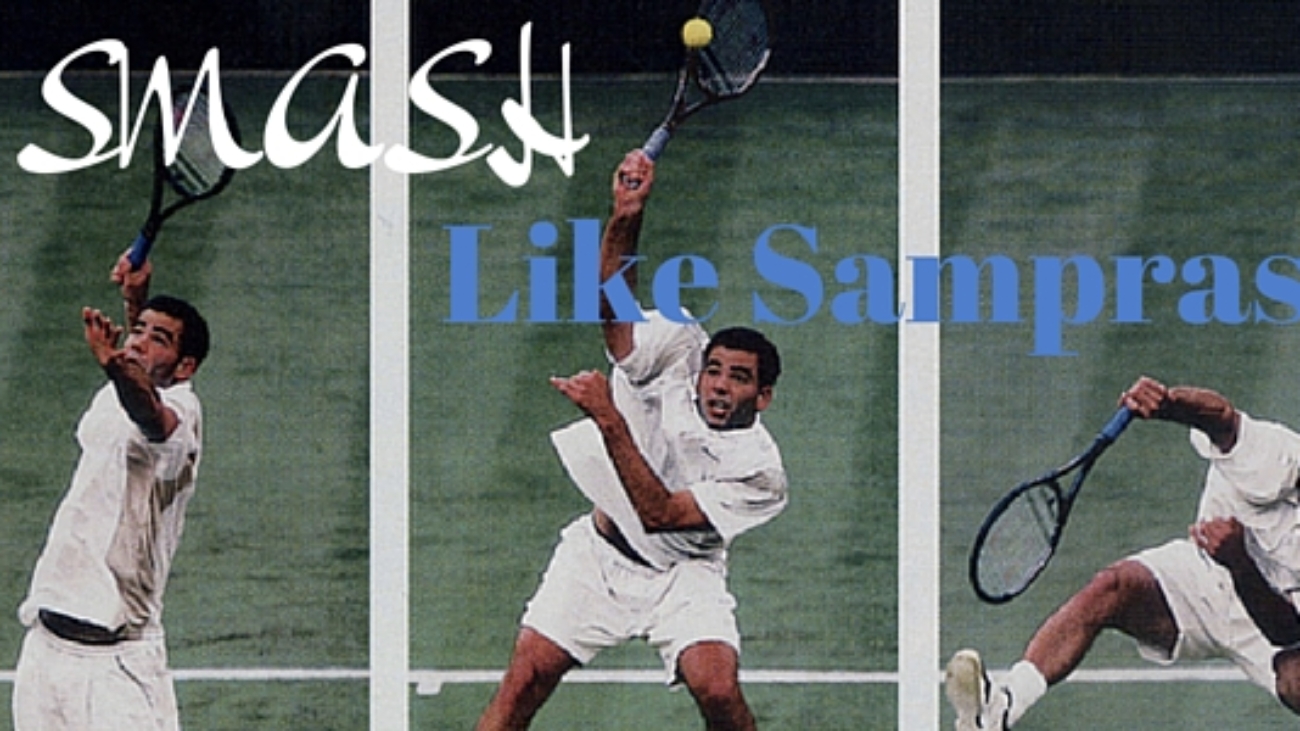Did you manage to read part 9 last week based on improving your volley technique, I had some great feedback from that blog post. If you haven’t read it yet, click here to have a read.
In the part we are going to look at simple ways to improve your smash, specifically at the arm movement. As a doubles player, the smash is an essential weapon in your arsenal since you are looking to spend the majority of your time at the net and closing the net down.
Essential Elements
The key to improving your overhead is understanding, learning, and practising a three essential elements:
- Unit turn
- Movement (footwork)
- The arm swing
In this blog will will focus on the arm movement.
Before I start discussing the arm moevment, I want to stress the necessity to learn and to use the continental grip around the net, on the serve, and on the overhead. The continental grip, along with a good unit turn as described next, is what allows greater racket acceleration and, therefore, ball speed.
The arm swing
The first step to creating a great arm swing, as in all the shots, it is creating the turn position with your feet and torso as described in part 8.
The second step is getting to the tick or trophy position. There are a 2 ways to do this:
- The racket drop. The racket falls along the side of the torso with the tip pointing more or less straight down at the court, then swings up like a pendulum in to a tick position creating a lot of momentum.
- The abbreviated takeback. Just like on Rafa’s serve the racket doesn’t drop instead it comes straight to the tick/trophy position
You can use either of these methods but bear in mind if you don’t have much time option 2 would be used.
The third step is the swing to contact. The simplest way to think of this is think as though you are throwing your racket at the ball., if you over think this and break it down in to too much detail you will struggle. If you have a correct relaxed service motion, you shouldn’t have to think about all this too much and it will probably happen naturally.
A simple way to improve this motion is to practise throwing, (as a guide you should be to be able to throw the ball from the baseline to at least the service line on the other side), if you cant do this then practise, if you can do this you should be able to generate good racket speed.
Overall, what makes the overhead difficult is the ability to move in position with the proper turn position. The unit turn and the movement, I believe, are the two areas where the average player needs to focus. The arm swing is important, but as your serve arm swing improves in this area so will your overhead swing. As I mentioned above, conquering the ability to do the cross steps as you initiate the turn will go a long way in making the overhead the best part of your game.
The Overhead Game
There is a great live ball overhead drill that I have used many years with my high school doubles teams to work on implementing the overhead in matches.
One team is back at the baseline and one team is at the net. Your coach or one of the back players starts the point by lobbing to the net players. The lob feed should not be too tough or too easy. The net players cannot let the ball bounce either on the lob or the volleys.
After the lob is hit, the point is live. The baseline players can do anything they want — lob, hit, go to the net, etc.
First team to five points wins, then everyone rotates (clockwise) one position and the game starts again. Rotating the positions gives the players practice from both halves of the court, which is important because of the differences in the angles.
This drill is a great way to just get completely comfortable with hitting overheads everywhere on the court. Even if you are a singles player, it gives you the repetitions and the variety of movement and positions on the court that you need.
If you haven’t really developed an overhead, this game can be difficult at first because so many of the overheads are hit while moving back. Overall, though, it’s the best way I know of to develop those critical cross steps. You’ll know you are getting better when the team hitting the overheads starts to win the majority of the games.
Tennis Holidays are a great way to make real progressions in your game, it is an intense week of learning new skills in the morning and putting them in to practise in the afternoons. Being able to play for 20 hours in one week means that you can really make changes in your game fast! Our Tennis Holidays our suitable for all levels whether you are a complete beginner through to county level players – everyone is welcome!














